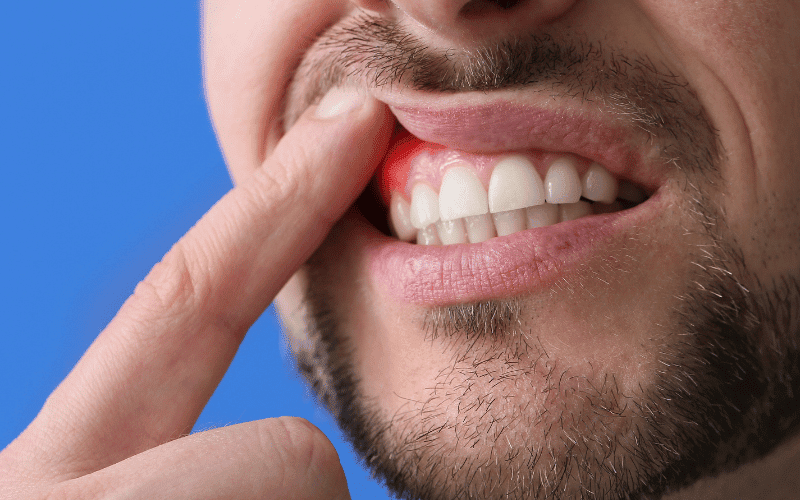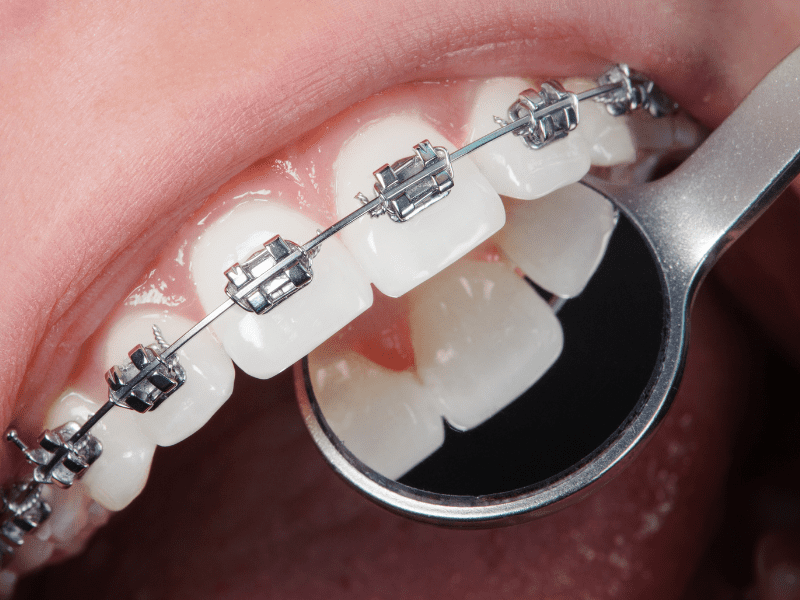We all know the importance of good dental hygiene. Our teeth are essential for us to live a healthy life, so it’s crucial we look after them. At our Perth dental clinic, we often diagnose patients with gum disease. This diagnosis is often devastating, and most people are keen to avoid such a diagnosis in the first place. A common comment when we see patients for the first time after we have diagnosed gum disease is; “How come I haven’t been told about this before?” This is an extremely difficult question to answer, however, one thing that we can be sure of is that despite what the patient thinks, that they are doing everything possible to clean their teeth efficiently, this is not normally the case. In other words, they are not winning in their daily routine – if they are not winning and we use a sporting analogy, is the coach going to say that you should continue playing with a losing game plan? Of course not, we have to change something, and that is what we focus on all the time at West Coast Dental Care – one of Perth’s advanced dental clinics.
It’s important to acknowledge that gum disease is a danger that we all live with, but there are things we can be doing to lower our risk for gum disease. That’s why West Coast Dental Care has put together this guide that uncovers some facts about gum disease, how it can occur, and what you can do to prevent it.
What is gum disease?
Gum disease, also known as periodontal disease, is an infection of the gums and bone around your teeth i.e. the tissue that keeps your teeth in place. There are various common symptoms of gum disease, however, sometimes the patient is totally unaware of it.
Some of the most common symptoms of gum disease include:
- Red, swollen or tender gums
- Bleeding gums
- Bad breath
- Loose teeth
- Tender teeth
- Drifting teeth
- Teeth that look longer than normal, due to the gum recession.
In most cases, gum disease causes bleeding and tender gums, sensitive teeth and bad breath. Advanced-stage gum disease often causes the loss of teeth and if left untreated, the bad infection certainly affects your general health.
Learn more about the causes and solutions for missing teeth.
Early-stage gum disease
Early, or first stage, gum disease is called gingivitis. Recognising these early symptoms is perhaps the most effective way to avoid contracting more serious gum disease since you can stop the disease in its tracks before it develops any further. Symptoms of early-stage gum disease include:
- Red or swollen gums
- Consistent bad breath
- Blood in the sink during or after brushing or on dental floss
- Discolouration of the teeth
Remember, the earlier gum disease is caught, the easier it is to address. If you notice you’re beginning to experience any of these symptoms, contact your dentist immediately to obtain a diagnosis.
How does gum disease occur?
Gum disease usually originates due to less than adequate oral care, and generally is present for many years before it is properly diagnosed. Very often, it is a painless disease and this fact deceives many patients that everything is all right in their mouths – this often leads to extended periods without seeing a dentist. That is one of the reasons for seeing a dentist every six months, on average, so that the oral health can be closely monitored and the patient can also then be “coached” to improve their game plan. That is the aim, to constantly improve the cleaning process so that ultimately, we can have a winning game plan.
The factors that contribute to the development of gum disease:
Plaque
Generally speaking, gum disease occurs due to a buildup of excess natural bacteria around the teeth and under the gums due to inefficient cleaning. There is a normal population of bacteria in our mouths, however, when the colonies become excessive and entrenched around the teeth and gums, periodontal disease occurs. This cannot be repeated often enough, because most people don’t quite understand this concept – to expand, 95% of the bacteria (plaque) are situated between the teeth. A toothbrush cannot clean between the teeth – if that’s the case, how much of the bacteria does a toothbrush have access to? That’s right, only 5%. The other 95% is safely colonised between your teeth doing their best to have a good life.
Clearly, brushing alone is not good enough and definitely is a losing game plan, that needs to be changed ASAP.
This build-up of plaque (bacteria) is not only visually unpleasant but exceptionally harmful to your teeth, aswell as your gums. Plaque releases corrosive acids that attack the protective enamel on your teeth, leading to decay.
When left undisturbed, plaque will eventually harden (fossilise) into something called tartar, which cannot be removed without going to the dentist. Even if you are diligent about brushing and flossing, tartar can start to accumulate in those hard-to-reach places. This material forms along the line between your gums and your teeth, building to the point that it can start to irritate your gums and cause gingivitis.
Prevention
There are steps that you can take to reduce and even reverse gum disease and gingivitis.
Good oral hygiene
Brushing your teeth twice a day with a fluoride toothpaste and flossing daily to remove plaque and food particles from teeth and gums can really make all the difference.
Our advice is to choose a soft-bristle toothbrush and replace it 3-4 times a year.
The choice of toothpaste is just as important. A fluoride toothpaste helps to strengthen the enamel and make teeth more resistant to decay. So even if it costs a few cents more in the shopping aisle, it’s worth it.
Flossing is just as important because it targets the removal of plaque and food particles from between the teeth and along the gumline – arguably your best weapon in preventing the buildup of plaque which causes gum disease. Failure to remove plaque from these areas can lead to tartar. Also known as calculus, tartar can only really be removed by a dental professional and if left on teeth will irritate and inflame the gums, which in turn leads to gum disease. This brings us on to our next point …
Regular dental cleanings
Taking responsibility for your own oral hygiene is really important. However, we appreciate that you need a little help along the way and coming in to see us for a regular clean can make a huge difference in the battle to prevent gum disease.
The reality is that with our equipment and expertise we have far greater visibility of what’s going on and the capabilities to get in to those hard-to-reach places and eliminate the plaque you may have missed when cleaning your own teeth. For us, a professional dental clean is paramount.
Preventative care such as a professional scale and clean procedure involves the removal of tartar, bacteria and debris from the teeth and gums. As a rule, a scale and clean every six months will maintain a high standard of oral health and significantly decrease your risk of gum disease.
To this end, West Coast Dental Care uses gentle techniques to minimise discomfort or damage to tooth enamel.
Caught early, gingivitis and some gum disease can be treated and even reversed. The longer you wait, the more difficult and invasive treatment becomes. Even if you think you’re being silly or overly cautious, it’s better to be safe than sorry.
Do not ignore these warnings and put off the dentist for a later day! Get into the office for a visit now.
Smoking
Smoking has several negative implications for our health, and our teeth and gums are not exempt from this. Smoking accelerates the effect of plaque and the bacterial infections that follow by interfering with your gums natural ability to resist the bacteria. The nicotine and tar in cigarettes also weaken the gums and make them more susceptible to disease.
It should also be noted that smoking impacts the effectiveness of gum tissue and treatments, making it much harder for gums to heal. Smoking also makes it easier for bacteria to infect and damage the gums, leading to disease.
The benefits to oral health from quitting smoking are often noticeable within a few days to several weeks after stopping. The reduction in blood flow to the gums and other tissues in the mouth improves and the gums start to look a lot healthier and less red or swollen.
The risk of gum disease and other oral health problems decreases over time and the full extent of the improvement in oral health may take several months to a year or more to become apparent.
In 2023 vaping is becoming increasingly popular among young people and those who are looking to give up smoking cigarettes. However, the nicotine and other chemicals in e-cigarettes can reduce blood flow to the gums and make them just as vulnerable to infection and disease. The addition of sweet flavours and high sugar content of many vapes can further increase the risk of gum disease. So while vaping might be considered less harmful in some ways than cigarettes, it still has a negative impact on oral health and increases the risk of gum disease.
Final thoughts
Our teeth are so important to our lives and well-being and they require constant care. By following a strict teeth cleaning routine, regularly seeing a dentist, and immediately addressing potential symptoms of gum disease, we can limit our chances of contracting gum disease and stop more serious gum disease from developing.
Do you need an oral hygiene consultation? West Coast Dental Care is here to help. From routine cleanings, fillings, and x-rays to advanced dental procedures, smile design and Perth orthodontics, our team is eager to help. To book an appointment, use our online portal to view available time slots. You can also call our office directly or visit us in person.













